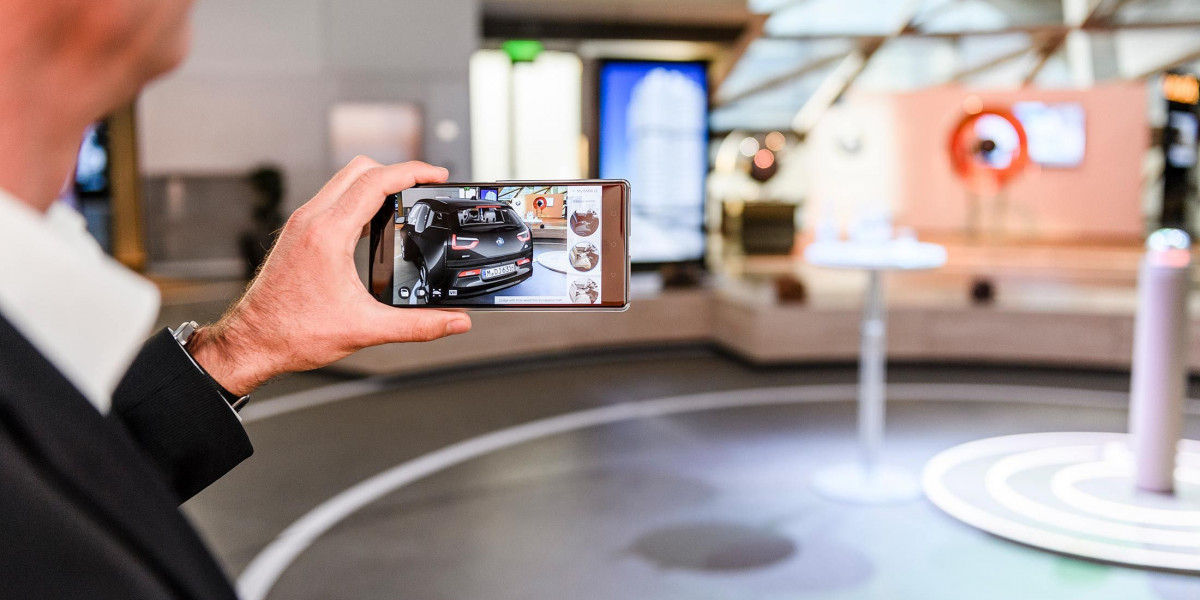Augmented Reality (AR) in the Retail Market has gained substantial attention in recent years, revolutionizing the way businesses engage with consumers and transforming the shopping experience. This immersive technology overlays digital content such as images, sounds, or other sensory stimuli onto the real world, providing users with enhanced interactive experiences. Retailers have increasingly adopted AR to create innovative, engaging, and personalized shopping experiences that improve customer satisfaction and drive sales. However, despite its promising potential, the AR in retail market faces several challenges and restraints that could hinder its widespread adoption and growth.
High Initial Investment and Infrastructure Costs
One of the key barriers to AR adoption in the retail market is the high initial investment and infrastructure costs. For a retailer to implement AR technology effectively, significant investments in hardware (such as AR glasses or interactive displays) and software (such as AR development platforms and applications) are required. Additionally, setting up a robust network infrastructure to support AR experiences, particularly in large stores or chains, adds to the cost. Small and medium-sized retailers, who often operate with limited budgets, may find it challenging to allocate resources for such an investment. This can limit the accessibility of AR technology to larger retailers or brands with higher capital and resources.
Complexity of Integration
Integrating AR technology with existing retail systems can be complex and time-consuming. Retailers typically rely on various systems, including point-of-sale (POS) systems, inventory management software, and customer relationship management (CRM) platforms. Seamlessly integrating AR into these existing systems to ensure smooth functionality requires significant effort in terms of both technical development and testing. This complexity can discourage many retailers from adopting AR, especially when the process involves training staff and updating or replacing existing technologies. Retailers may also face compatibility issues, particularly if their current systems are outdated or incompatible with the latest AR technologies.
Consumer Readiness and Adoption
While AR has the potential to revolutionize the shopping experience, consumer readiness and adoption remain key obstacles. Many consumers are still unfamiliar with AR technology or may perceive it as gimmicky or unnecessary. This lack of awareness and understanding can hinder the mass adoption of AR in retail environments. Furthermore, the technology may require consumers to download specific apps or use certain devices, which can be seen as inconvenient or cumbersome. Retailers must invest in educating consumers and raising awareness about the benefits and ease of use of AR experiences, but this can take time and resources.
User Experience and Usability Issues
The effectiveness of AR in retail is heavily reliant on delivering a seamless and enjoyable user experience. If AR applications are not user-friendly or intuitive, consumers may quickly lose interest, undermining the technology's potential to enhance the shopping experience. Issues such as poor graphics, slow load times, or complicated navigation can negatively impact the effectiveness of AR in retail. Additionally, some consumers may experience discomfort when using AR applications, particularly if the technology induces motion sickness or eye strain. These usability concerns can limit the broader appeal of AR technology and prevent it from becoming mainstream in the retail sector.
Privacy and Security Concerns
With the increased use of AR in retail comes the collection of vast amounts of personal data. AR applications often rely on customer data, such as location, preferences, and shopping behavior, to provide personalized experiences. While this can enhance the customer experience, it also raises significant privacy and security concerns. Consumers may be hesitant to adopt AR technology if they are unsure about how their data will be collected, used, and protected. Retailers must prioritize safeguarding customer data and comply with privacy regulations to build trust and ensure that consumers feel confident using AR applications. Failure to do so could result in a decline in consumer adoption and potential legal ramifications for businesses.
Technological Limitations
Although AR technology has made significant advances in recent years, there are still technological limitations that impact its widespread adoption in the retail market. The quality and accuracy of AR experiences are often dependent on the performance of the device being used, whether it be a smartphone, tablet, or AR glasses. Current devices may struggle with the processing power needed to deliver smooth, high-quality AR experiences, especially in complex retail environments. Additionally, AR requires significant bandwidth and network reliability, which may be difficult to maintain in large stores or locations with limited connectivity. Until these technological limitations are addressed, the potential of AR in retail may remain constrained.
Resistance to Change and Traditional Retail Models
Many retailers, particularly those with established business models and long-standing customer bases, may be resistant to incorporating new technologies like AR. Traditional retailers who have succeeded using conventional brick-and-mortar strategies may hesitate to adopt digital innovations due to the perceived risk of alienating their existing customers or disrupting their operations. Changing the mindset of these retailers and encouraging them to invest in AR requires overcoming significant inertia and convincing them of the tangible benefits that AR can offer. This resistance to change can slow the adoption of AR in the retail industry.
In conclusion, while Augmented Reality offers immense potential to transform the retail landscape, there are several challenges and restraints that could limit its widespread adoption. High initial costs, integration complexity, consumer readiness, usability issues, privacy concerns, technological limitations, and resistance to change are just some of the obstacles retailers must overcome. Addressing these issues will be crucial to unlocking the full potential of AR in the retail market and ensuring that it becomes a mainstream tool for enhancing the shopping experience. As technology continues to advance and consumer acceptance grows, AR's role in retail will likely expand, but it will take time for these challenges to be addressed comprehensively.
read more:
| https://www.pristinemarketinsights.com/augmented-reality-ar-in-retail-market-report |








